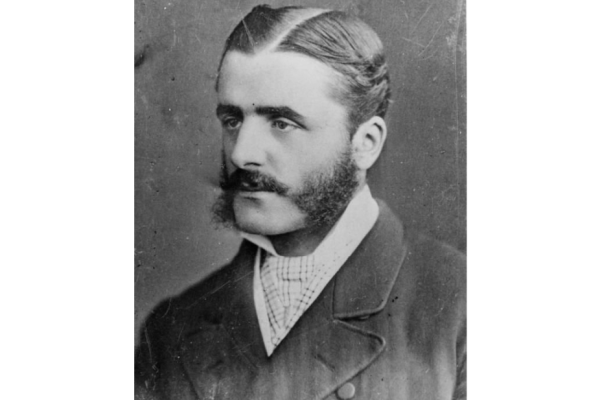Home » Collections showcase » Alfred Cunnington’s telephone
Alfred Cunnington’s telephone connected his wine merchant business at the Old Town Hall in Devizes with his nearby home at Southgate House.
Cunnington had read about Alexander Graham Bell’s invention of the telephone published in Scientific American in 1876. Using the diagrams in the article, he set about making his own version.
Cunnington fitted his first phone at his wine business in 1877, between the ground floor and the cellars. The following year, he began connecting it with his family home. Sadly he died before completion, but his brothers continued his work.
It was probably the first telephone installed for work-to-home calls in England.
The phones stayed in place until the National Telephone Company obtained exclusive rights to telephony in Britain. Cunnington’s phones were hastily dismantled under the threat of penalties.
They were exhibited at a science event in the Town Hall, Devizes in 1879 and again in 1900 at Edison’s exhibition of electrical appliances in London.
The story of Cunnington’s telephone involves science but is also very relevant to our lives today. In the video below, student Amy Ellis (15) outlines how the telephone could be used as an engaging topic in Key Stage 2 Science.

The telephone cable that connected the Cunnington’s wine shop with his house ran along Long Street. It wasn’t very popular with the residents. In 1933, Captain B H Cunnington wrote a newspaper article called Early Telephones of Wiltshire Make:
“Mr Sloper refused to allow the wires to be attached to his house, as he feared it would attract lightning and bring ruin to his premises. Many complaints were received that they could hear the talking going on over it during the night. Some even protested that they could hear it during the day-time.
Generally speaking, this telephone did not meet with a friendly reception from the inhabitants over whose homes the wire passed, but it created a great deal of interest. Both Southgate House and the Old Town Hall were, in the early days of the installation, often visited by persons anxious to see and hear the ‘speaking instruments’.”
| Cookie | Duration | Description |
|---|---|---|
| cookielawinfo-checkbox-analytics | 11 months | This cookie is set by GDPR Cookie Consent plugin. The cookie is used to store the user consent for the cookies in the category "Analytics". |
| cookielawinfo-checkbox-functional | 11 months | The cookie is set by GDPR cookie consent to record the user consent for the cookies in the category "Functional". |
| cookielawinfo-checkbox-necessary | 11 months | This cookie is set by GDPR Cookie Consent plugin. The cookies is used to store the user consent for the cookies in the category "Necessary". |
| cookielawinfo-checkbox-others | 11 months | This cookie is set by GDPR Cookie Consent plugin. The cookie is used to store the user consent for the cookies in the category "Other. |
| cookielawinfo-checkbox-performance | 11 months | This cookie is set by GDPR Cookie Consent plugin. The cookie is used to store the user consent for the cookies in the category "Performance". |
| viewed_cookie_policy | 11 months | The cookie is set by the GDPR Cookie Consent plugin and is used to store whether or not user has consented to the use of cookies. It does not store any personal data. |

Males great bustards perform spectacular courtship displays, gathering at a ‘lek’ or small display ground to try to impress the females.
The great bustard has a dignified slow walk but tends to run when disturbed, rather than fly.
The hen-bird on display at The Salisbury Museum was one of the last great bustards to be eaten in the town!